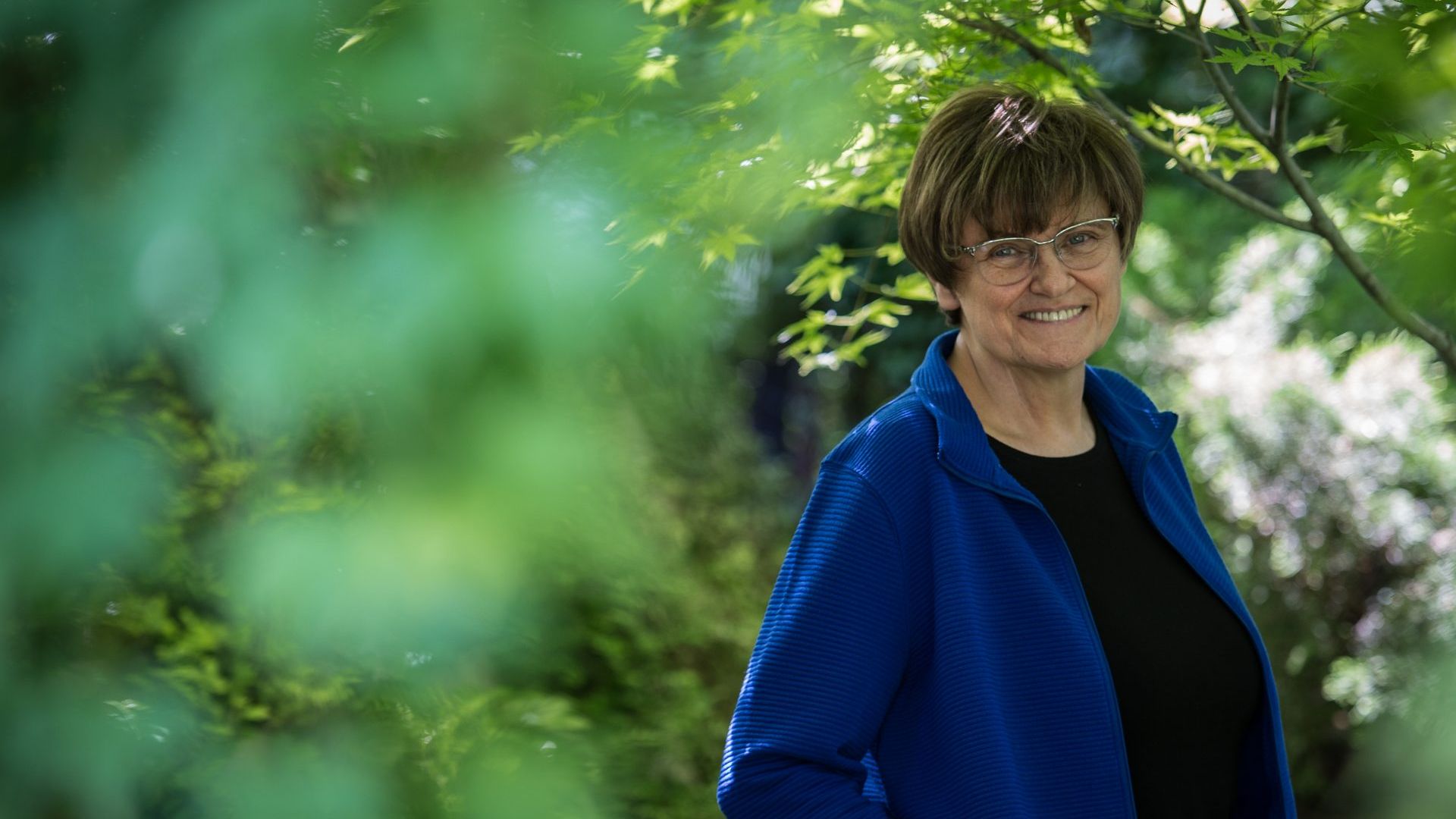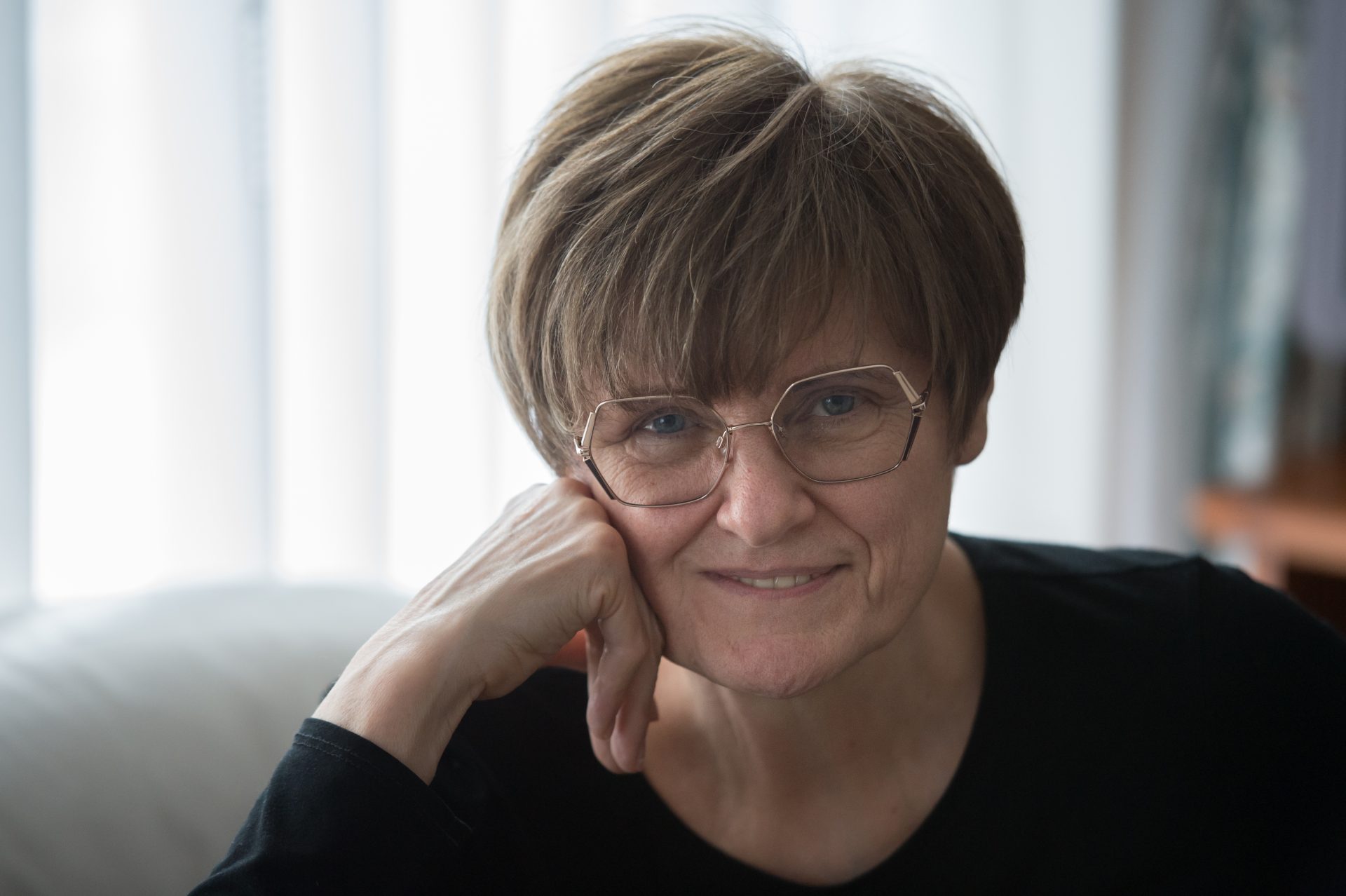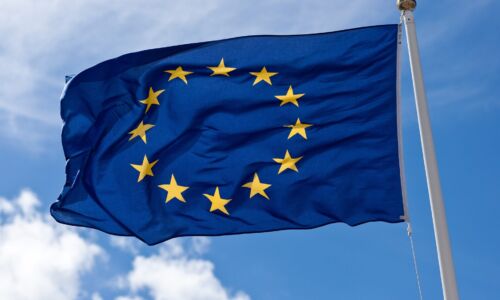Honorary Doctor Katalin Karikó epitomises scientific perseverance
-
 Katalin Karikó. Foto: Csilla Cseke
Katalin Karikó. Foto: Csilla Cseke
Hungarian-American Katalin Karikó will receive an Honorary Doctorate on Thursday for her pioneering mRNA research, which led to the Pfizer vaccine. Thanks to her work, millions of people around the world are now protected from the severe COVID-19 virus, but she remains humble. ‘It’s not about me.’
This year, she was tipped to win the Nobel Prize in Physiology or Medicine, but the prize went to Swedish evolutionary biologist Svante Pääbo. ‘When she was still alive, my mother would say at least once a year: You work so hard, maybe now you’ll win the Nobel Prize!,’ Katalin Karikó says via Zoom from Philadelphia. ‘That really made me laugh. I’d say, Mum, all scientists work hard. The chance of winning that prize is pretty unlikely.’
Setbacks
This Thursday, Karikó (who was born in Hungary in 1955) will be presented with an Honorary Doctorate at Radboud University, during the 99th Dies Natalis. The biochemist will receive her doctorate for the research that she conducted on mRNA (the messenger molecules in our cells) at the University of Pennsylvania with her colleague Drew Weissmann. Their insights proved to be crucial for the rapid development of Pfizer/BioNTech and Moderna’s mRNA vaccines (see text box). In a profile that was published last year, the New York Times referred to her as ‘one of the heroes’ behind these coronavirus vaccines.
‘All scientists build on what others have done, that’s how science works’
But Karikó’s perseverance is also a major reason for why Radboud is awarding her an Honorary Doctorate. ‘She’s someone who’s managed to stay on her feet, despite adversity,’ said Honorary Supervisor and Professor of Organic Chemistry Floris Rutjes about her in the university news item about her Honorary Doctorate. Karikó often had little research funding, she was fired several times, and in 1985 – in the midst of the Cold War – and with barely a cent to her name, she moved from Hungary to the United States with her husband and two-year-old daughter. They hid the $900 that they’d got for their car when they sold it on the black market in a teddy bear.
About Katalin Karikó
Katalin Karikó (who is known as Kati) was born on 17 January 1955 in Szolnok, Hungary. After finishing high school, she went on to study and obtained her PhD at the University of Szeged. In 1985, she left for the US to become a researcher at Temple University and subsequently went on to work at the University of the Health Sciences in Bethesda. In 1995, she transferred to the University of Philadelphia, where she did much of her crucial mRNA research with Drew Weissman. Her interest initially lay in therapeutic applications of mRNA, such as those for solving vascular problems. The mRNA technique only really broke through when it proved to be useful in vaccines.
Karikó is married and has a daughter, Susan Francia, who is a two-time Olympic rowing champion.
Since the breakthrough of the mRNA coronavirus vaccines, Karikó’s life has been turned upside down. She is now vice president of BioNTech and has received dozens of awards over the past two years. Some of them can be seen behind her during the video call from her home office. ‘Last year, the cupboard behind me was completely empty,’ she says. And for the first time in their lives, Karikó and her husband recently bought a brand new car, instead of a second-hand one.
What does it feel like to suddenly receive so much praise?
‘You know what, it’s not about me, which is what I always say when I get an award. ‘All scientists build on what others have done, that’s how science works. Besides, there are so many good researchers who never receive an award, and before the coronavirus came along, I also spent forty years working in the shadows. You shouldn’t be waiting for that ultimate pat on the back. It’s also possible that something that you’ve discovered will only turn out to be useful after you’ve died. And in one hundred years time, nobody will know who I was.’
You won’t be live in Nijmegen on Thursday.
‘No, unfortunately not. I’ll be giving my thanks via a pre-recorded video message. I’m also being awarded the Vilcek Prize on the same day in New York. That’s an award for immigrants who have had a significant impact on American society. An award like that means a lot to me. Immigrants like myself have often been through a lot, and we don’t give up that easily. And that’s something that often makes you capable of achieving more than you ever could have imagined.’
Was your background something that you were able to use to good advantage in your work?
‘Definitely. As a scientist, you have to be optimistic. When you’re doing research it feels like you’re persistently failing, because experiments quite often go wrong. We have a sign hanging in our lab that reads: ‘Experiments are never wrong, it’s only your expectations that are wrong’. I think that you should always believe in yourself, even if others don’t. In 2013, I was demoted yet again for not possessing the qualities of an academic staff member. I was 58 years old and could have easily chosen to stay home. But I decided to continue my research, because I knew I had to succeed in making mRNA that was clinically useful.’
For many years, the advent of mRNA vaccines seemed to be a long way off, because the body reacts quite violently to injected mRNA. But you found a solution to this problem. How did that come about?
‘Normally, mRNA is only found inside a cell. But if you inject it like a vaccine, it gets in between the cells. This subsequently results in an inflammatory response, because your body knows that it doesn’t belong there. I figured out that not all types of mRNA cause an inflammatory response. In fact, mRNA can be found in different types and sizes in your body. One of these mRNA types uses slightly different components and it therefore proved to be one type that doesn’t produce an inflammatory response. And that’s what made it suitable for a vaccine.’
Was that a light-bulb moment for you?
‘It rarely works that way in real life [she laughs]. You have to carry out so many experiments before you understand how something really works. It still took us two or three years to solve a range of different problems, such as imperfections and entangled mRNA. In those days, I’d end up spending Christmas and New Year’s Eve in the lab.’
You spent forty years doing all your own experiments. That’s quite unique in the scientific community.
‘I usually had the help of a few PhD candidates and research funding, so I just had to get on with it. But lab work is the most exciting part of the job. And after having done it for so many years, it gets easier, because you know exactly which mistakes to avoid. I think that many of the scientists who became managers during the coronavirus crisis thought: Those people at their lab benches are really enjoying their work, while I’m working from home and worrying about whether everyone’s getting paid.’
Some people have concerns about the mRNA vaccines. For instance, they’re worried that it will alter their genetic material.
‘People have always been afraid of new technology. A hundred years ago, Röntgen discovered that radiation beams could be used to see through skin. So people in London suddenly started to try and ban X-rays in binoculars. They were afraid that you’d be able to see through other people’s clothes with them. Another group of people tried to capitalise on this by selling ‘X-ray proof’ underwear.’
‘People don’t have to think twice when they’re asked to name a few top football players, but when you ask them to name a few top scientists it’s a completely different story’
‘Exactly the same thing is happening now. Many of the people who advised against the vaccine have got something else that they’re trying to sell, such as a certain type of pill that’s also supposed to work against the coronavirus. There’s no way that the mRNA vaccines can modify your DNA. But those people who don’t know enough about the subject matter only end up making a decision on the basis of a feeling, which means asking themselves: Who do I think is most credible?’
How can this problem be solved?
‘I believe that, in the past, researchers like me and journalists like you didn’t try hard enough to explain science to the general public. And that’s why I’m talking to you now. Because it is possible to explain science – a good example of this is that everybody now knows what a PCR test is. We have to explain to people exactly what a molecular biologist does. And explain how Nobel prize winners like James Allison and Tasuku Honjo have made sure that people no longer die from certain types of cancer, whereas ten years ago these illnesses would have meant that they were going to die. People don’t have to think twice when they’re asked to name a few top football players, but when you ask them to name a few top scientists it’s a completely different story.’
However, there are also genuine concerns about mRNA vaccines. For instance, in very rare cases they may be responsible for the heart condition myocarditis, especially in young people.
‘I’d like to make it clear that I’m not a vaccine expert, but I do know a lot about mRNA. What ultimately matters is how the risk of serious side effects compares with the risk of serious disease in those who have not been vaccinated. By the way, young people have sometimes been known to develop heart problems after they’ve had the Novavax vaccine. And that’s a protein vaccine, which doesn’t contain any mRNA at all.’
Do the awards that you’ve received now feel somewhat like compensation for all of the people who didn’t believe in you?
‘No, not at all. I’m actually very grateful to those people, because without them, I wouldn’t be where I am today. Last year, I heard from a nursing home that said that they’d created a ‘Katalin-Karikó Day’, because since they started using the vaccines, far fewer residents had died from the coronavirus. That gives me more satisfaction than any recognition ever could.’
mRNA vaccines
A typical vaccine often consists of a fragment of a virus or bacteria; this fragment is usually a protein. Our immune system recognises this protein as something that is foreign to the body and sets to work to produce antibodies that will render it harmless. Once the real pathogen enters the body, an army is waiting to recognise it by the fragment from the vaccine. It’s a bit like when you recognise someone because they’re wearing something distinctive, like a beret.
The trick that mRNA vaccines play is that they don’t contain a protein, they only contain the rules of instructions for making such a virus fragment. These rules have been encoded in a piece of mRNA, which is a molecule that is very similar to DNA. DNA is the hereditary material in our cells that contain the building instructions of everything that makes us human.
If you think of DNA as a clothing manual, mRNA is a copy of the instruction page for making an item of clothing, which in this case is a beret. On the basis of this copy, the cell itself starts sewing and – as with regular vaccines – the immune system subsequently recognises the beret as something that is foreign to the body and starts to make antibodies.
The main advantage of mRNA is that it is much faster and cheaper to make than an entire protein. And if a virus changes shape (in other words, if a new variant emerges), then all you have to do is slightly amend the rules of instructions, rather than create a whole new beret.
The Dies Natalis will be held in Radboud University’s Auditorium on Thursday 20 October from 2.00 pm to 3.30 pm. Professor of Theology Thomas Quartier will deliver the Dies Lecture. In addition to Karikó’s Honorary Doctorate, the Radboud University Medal and Radboud Student Awards will also be presented. Music will be provided by Clean Pete.




